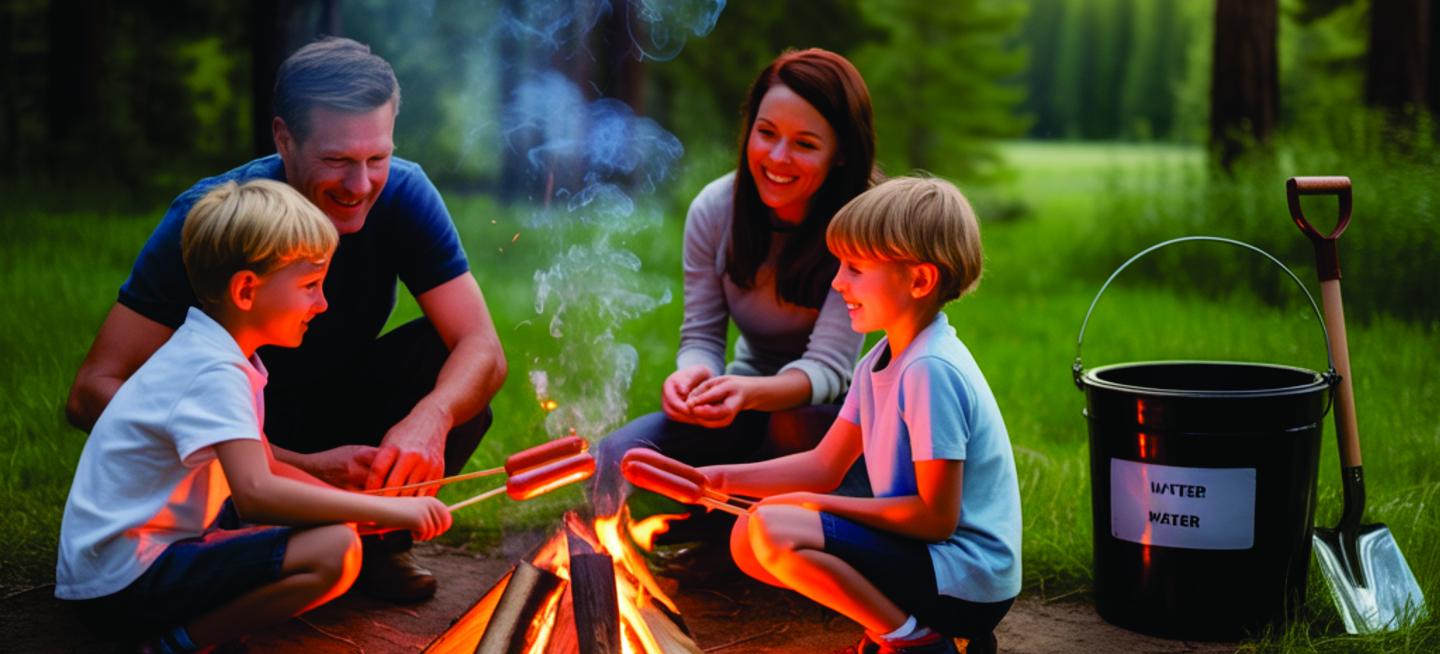
Campfire Safety 101: Essential Tips for Responsible and Enjoyable Fires While Camping
June 17th, 2025 9:00am
The Warm Glow of Responsibility
There is something undeniably magical about a campfire. We refer to it as “caveman TV.” The crackle of burning wood, the warmth on a cool night, and the way it draws people together to share stories, laughter, and a few perfectly toasted marshmallows. For many outdoor enthusiasts, a campfire is more than just a heat source, it is a highlight of the camping experience. In fact, we love campfires so much that we even love the smell of the smoke in our clothes, long after the experience.
But with that tradition comes responsibility. Wildfires sparked by careless or poorly managed campfires are a growing concern, especially during dry seasons. What starts as a small flame meant for hotdogs & s’mores can quickly become a dangerous blaze, threatening public lands, wildlife, communities, and lives.
Whether you are a first-time camper or a seasoned adventurer, knowing how to safely enjoy a campfire is essential. It is not just about following rules, it is about protecting the places we love to explore. This guide will walk you through everything you need to know from checking fire restrictions and choosing a safe location, to managing your fire properly and ensuring it is fully extinguished before you leave.
Before you strike that match, take a moment to brush up on these fire safety essentials. Because with the right knowledge and care, you can enjoy those flickering flames without putting the forest—and your adventure—at risk.
So, without further ado, here are our suggestions for having a safe camping & campfire experience.
Check Fire Restrictions Before Your Trip
- Contact the local land management agency (e.g., National Park Service, U.S. Forest Service, BLM, state park service, etc.) for up-to-date fire regulations.
- Fire restrictions can change daily depending on weather and fire danger levels.
- Campfires may be banned even in designated fire rings during high fire danger periods.
- Some areas require a campfire permit, even for using a portable stove.
- Never assume a fire is allowed just because there is a fire ring or fire pit present.
Choosing a Safe Location
- Use existing designated fire rings, grills, or metal fire pans whenever available.
- If dispersed camping and allowed to build a fire:
- Choose a site at least fifteen feet away from tents, shrubs, trees, overhanging branches, dry grasses, and other flammable materials.
- Clear around the fire pit down to remove leaves, pine needles, twigs, and other dry, flammable debris.
- Do not build a new fire ring unless explicitly permitted by the land manager.
Building and Managing Fire Responsibly
- Keep fires small and manageable—just large enough for cooking or warmth.
- Use only dead and down wood, or bring local firewood purchased near the camping area.
- Do not burn trash, plastics, foil-lined packets, food scraps, or treated/painted wood.
- Never use gasoline, lighter fluid, or other flammable liquids to start or revive a fire.
- Avoid having a fire during windy conditions, even if fires are technically allowed.
While the Fire is Burning
- Never leave a fire unattended. Always have someone responsible monitoring it.
- Keep firefighting tools at hand:
- Have a full water container (bucket, jug, or pot)
- Keep a shovel or sturdy stick for stirring and smothering.
- Always supervise children and pets near the fire.
- Watch for flying embers that may ignite dry vegetation or gear.
Extinguishing the Fire Properly
- Allow the fire to burn down to fine ash and embers.
- Pour water slowly over the entire fire area, not just on glowing coals.
- Stir the ashes thoroughly with a shovel or stick to expose hot spots.
- Add more water and stir again until all material is cool to the touch.
- Use the back of your hand to feel for any remaining heat—everything should be completely cold before leaving or going to sleep.
- If allowed, scatter cold ashes to disperse any visual signs of a fire.
Alternatives During Fire Bans
- Use a gas or liquid fuel stove for cooking when campfires are prohibited.
- Confirm whether stove use is allowed—some extreme fire restrictions ban all open flames, including stoves without shutoff valves.
- Do not attempt to build a fire during a ban under any circumstances. Violations can lead to heavy fines, ejection from public lands, or cause devastating wildfires.
Leave No Trace Fire Practices
- Use existing fire rings—never create new ones unless permitted.
- Avoid blackening rocks or scorching tree trunks.
- Scatter unused firewood a short distance from the site to preserve a natural appearance.
- Remove trash and burn nothing that will not fully turn to ash.
- Always restore the area as closely as possible to its natural state before leaving.
